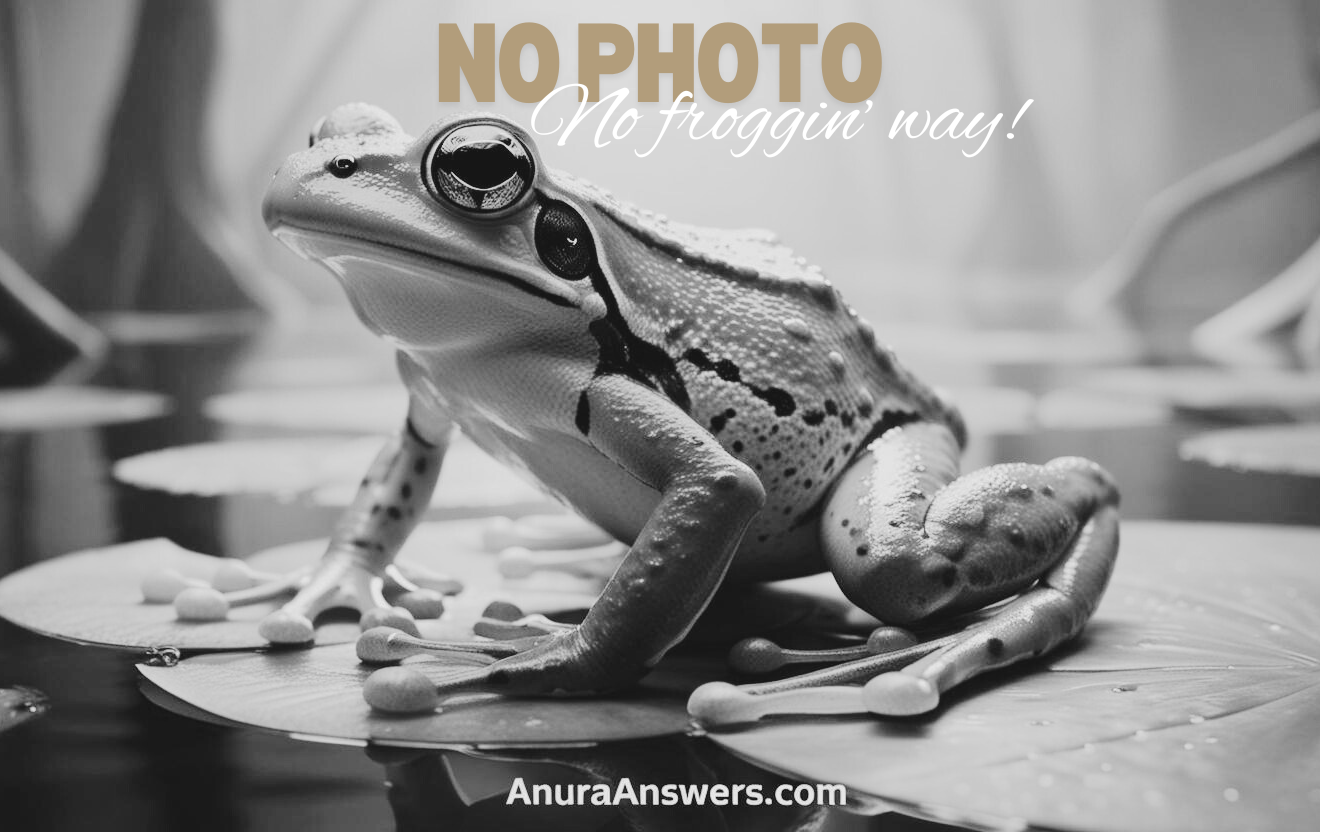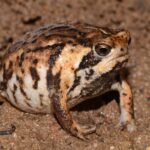Brachycephalus herculeus: Exploring Brazil’s Mighty Pumpkin-Toadlet#
In the lush depths of the Brazilian Atlantic Rainforest, hidden away among leaf litter and tangled roots, dwells a tiny but extraordinary frog—the Brachycephalus herculeus. Aptly named and affectionately nicknamed the “Pumpkin-Toadlet,” this small yet mighty amphibian embodies an intriguing blend of fragility and resilience. Its diminutive stature, barely larger than a thumbnail, belies an enchanting complexity that has fascinated scientists and nature enthusiasts alike since its discovery.
But what’s truly captivating about Brachycephalus herculeus isn’t merely its size or vibrant coloration; it is the singular adaptations, the charming behaviors, and the vital ecological role it occupies in one of our planet’s biodiversity hotspots. Join us as we take an immersive journey through mist-shrouded forests, exploring the secretive life and conservation narrative of Brazil’s “Hercules” among tiny amphibians.
Taxonomy and Classification#
Brachycephalus herculeus is part of the family Brachycephalidae, a diverse group of small-bodied frogs endemic to Brazil. Within this unique family, frogs in the genus Brachycephalus are notable for their miniature build, bright colors, and distinct evolutionary pathways. First described scientifically by prominent herpetologists Pombal Jr. and colleagues in 2015, B. herculeus quickly gained attention due to its remarkably robust skeleton, a trait that inspired its heroic scientific epithet “herculeus.”
This species shares its genus with several related pumpkin-toadlet species, each exhibiting small size and vibrant coloration as key shared characteristics. However, B. herculeus stands out for its particularly stout, robust physique when compared to its delicate relatives—an impressive evolutionary solution that hints toward its unique ecological adaptations and lifestyle.
Natural Habitat#
To encounter Brachycephalus herculeus in its natural element, one must journey to the heart of Brazil’s Atlantic Forest biome, one of Earth’s richest yet most threatened biodiversity reservoirs. Discovered in the high-altitude forests of the Serra da Bocaina National Park, this species inhabits strictly mountainous microhabitats ranging from about 800 to 1,200 meters in elevation.
A Rainforest Floor Dweller#
Unlike frogs that spend their days perched on leaves or swimming in streams, B. herculeus is an unmistakable dweller of the shadows, bathed in dim, emerald-hued sunlight filtering down from towering trees. This tiny frog spends its life nearly invisible among fallen leaves, moss-covered logs, and moist, decomposing debris—a mysterious, delicate realm of fungi, insects, and secretive amphibians.
Its specialized habitat preference lies within areas of pristine, undisturbed forest featuring moist microclimates. Here, every fallen leaf becomes a crucial resource, providing shelter, camouflage, and hunting grounds. Any disruption to this delicately balanced ecosystem spells trouble, underscoring how at-risk habitats affect small species disproportionately.
Physical Characteristics#
The physical charm of Brachycephalus herculeus is undeniable. Measuring just over one centimeter from snout to vent, it proudly embodies the extremes of amphibian miniature design. Yet, its diminutive size is compensated by a robust and stout skeleton structure—particularly thickened limb bones, ribs, and spine—which gives this little frog exceptional support and resilience in its rugged environment, much like its mythological namesake, Hercules.
A vibrant palette further distinguishes it. The Pumpkin-Toadlet earns its common name from its strikingly vibrant orange-golden coloration. This vivid hue not only offers immediate visual beauty but also serves an essential biological function: warning potential predators of its natural toxicity. Like many brightly colored frogs, B. herculeus possesses potent alkaloid toxins on its skin that discourage predation.
Adapted to Secrecy#
Its short limbs, rounded snout, and stout frame have evolved to help it maneuver easily through dense leaf litter. Minute skin glands secrete toxins, while a textured, often roughened hide camouflages the frog among leaf fragments, fungi, and soil grains. These adaptations harmoniously enable this tiny explorer to thrive in a world unnoticed by larger eyes.
Behavior and Life Cycle#
The life of Brachycephalus herculeus is largely mysterious, yet recent studies shed fascinating light on its behaviors and reproductive traits. Unlike certain amphibians that venture far and wide, this species is decidedly homebound. Staying confined to limited areas, individuals rarely venture more than a few meters throughout their lives, underscoring the critical need for habitat preservation.
Diet and Predation Tactics#
Life as a tiny forest floor dweller involves a diet of even smaller insects and microorganisms. Ants, mites, springtails, and other minute arthropods make up their main diet. Equipped with extraordinary patience and a swift strike, the frog ambushes prey from within the litter.
Mating Rituals and Reproduction#
One of the most intriguing behaviors observed in Pumpkin-Toadlets includes their unique mating calls, which, astonishingly, cannot be heard by the species itself. Due to structural limitations in their inner ears, these frogs emit sounds oblivious to their inaudibility, instead relying largely on vibrational signals and visual cues to attract mates.
Eggs are laid in the moist leaf litter, carefully concealed to avoid predation. Remarkably, this frog bypasses typical tadpole stages seen in many amphibians. Instead, their offspring hatch as fully formed miniature versions of adults, an adaptation known as direct development, which spares them from risks associated with larger bodies of water where predators abound.
Ecological Role#
Despite their miniature scale, these frogs fulfill significant ecological roles as predators of small insects, thereby controlling populations and maintaining balance within their rainforest habitat. Likewise, their presence signals good ecological health—acting as indicator species, their decline can hint at larger environmental crises affecting rainforest biodiversity.
Moreover, their toxin compounds offer potential benefits to human medical research; alkaloids present on their skin could inspire new pharmacological breakthroughs.
Threats and Conservation Status#
Sadly, like so many treasures of the Brazilian Atlantic Forest ecosystem, Brachycephalus herculeus faces constant threats. Primarily, habitat loss driven by deforestation, agriculture expansion, and climate change puts their delicate lives at risk. Fragmentation of habitat compounds their vulnerability, as these frogs cannot easily cross cleared areas to disperse or find new territory.
Current Conservation Efforts#
Conservationists emphasize protecting established parks and creating new reserves in areas of known Brachycephalus populations. Promoting sustainable ecotourism practices, reinforcing environmental education initiatives among communities, and implementing scientific monitoring programs are critical components of current conservation strategies.
Cultural and Scientific Significance#
Beyond biology, the Pumpkin-Toadlet represents cultural and symbolic values across Brazil. It has become a symbol of forest health and biodiversity preservation efforts, highlighting the urgent necessity of conserving fragile yet vital natural habitats.
Scientifically, the recent discovery of Brachycephalus herculeus broadened our understanding of amphibian diversity and adaptation, providing an intriguing puzzle for evolutionary biologists. Each newly identified species such as this underscores biodiversity’s complexities and significance.
Conclusion: Protecting Brazil’s Tiny Hercules#
Amid the towering canopies and whispering trees of Brazil’s Atlantic Rainforest, the Pumpkin-Toadlet makes its quiet stand for ecological balance and scientific discovery. Protecting Brachycephalus herculeus goes far beyond safeguarding one small frog—it means protecting an entire ecosystem, along with thousands of plant, animal, and fungi species intricately connected within it.
By appreciating and actively supporting the conservation of habitats like Serra da Bocaina, we ensure not only the survival of tiny amphibians but the diversity that makes our planet extraordinary. Let the diminutive courage of this tiny “Hercules” remind us of our immense responsibility toward nature and all its rich treasures.
Explore further, act today, and join us in protecting the hidden gems beneath the world’s forests.







